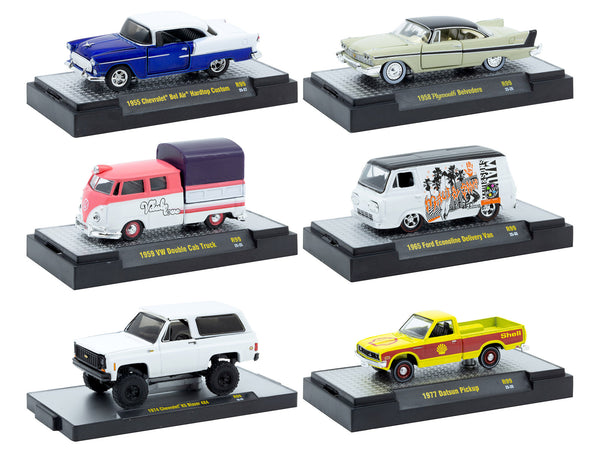
The Evolution of the Ferrari Testarossa
Related Products
Share
The Ferrari Testarossa is an iconic sports car that has captured the hearts of car enthusiasts for decades. From its sleek design to its powerful engine, the Testarossa has become a symbol of luxury and speed. But how did this legendary car come to be? In this article, we'll take a closer look at the evolution of the Ferrari Testarossa and how it has evolved over the years.
The Birth of the Testarossa
The Ferrari Testarossa was first introduced in 1984 as a successor to the Ferrari Berlinetta Boxer. The name "Testarossa" translates to "red head" in Italian, a nod to the red-painted cam covers on the car's 12-cylinder engine. The Testarossa was designed by Pininfarina and featured a distinctive side strake that ran along the side of the car, giving it a unique and aggressive look.
The 1984 Ferrari Testarossa
by YRKA PICTURED (https://unsplash.com/@yrkapictured)
The first Testarossa was powered by a 4.9-liter flat-12 engine that produced 390 horsepower. It could go from 0 to 60 mph in just 5.2 seconds and had a top speed of 180 mph. The car also featured a five-speed manual transmission and a rear-wheel drive system.
The Testarossa quickly gained popularity and became a status symbol for the wealthy. It was featured in numerous movies, TV shows, and music videos, solidifying its place in pop culture.
The Evolution of the Testarossa
Over the years, the Testarossa underwent several changes and updates, each one making it more powerful and refined.
The 1991 Ferrari 512 TR
In 1991, Ferrari introduced the 512 TR, which was an updated version of the Testarossa. It featured a larger 4.9-liter engine that produced 428 horsepower and could go from 0 to 60 mph in just 4.8 seconds. The car also had a redesigned interior and improved handling, making it a more comfortable and enjoyable ride.
The 1994 Ferrari F512 M
by Adrian Newell (https://unsplash.com/@anewevisual)
In 1994, Ferrari released the F512 M, which was the final version of the Testarossa. It featured a 5.0-liter engine that produced 440 horsepower and could go from 0 to 60 mph in just 4.7 seconds. The F512 M also had a redesigned front and rear end, giving it a more modern and aggressive look.
The 1979 Ferrari Sbarro 250 Testarossa
While the Testarossa was officially introduced in 1984, its design can be traced back to a concept car from 1979 – the Ferrari Sbarro 250 Testarossa. This concept car was designed by Franco Sbarro and was based on the Ferrari 512 BB. It featured a similar side strake design and a mid-mounted engine, but with a more angular and futuristic look.
The Ferrari Testarossa Body Kit
by Scott Webb (https://unsplash.com/@scottwebb)
The Testarossa's iconic side strake design has become so popular that it has been replicated on other cars through the use of body kits. These kits allow car enthusiasts to transform their own vehicles into a Testarossa lookalike, giving them a taste of the iconic car's design without the hefty price tag.
The Legacy of the Testarossa
The Testarossa may have ended production in 1996, but its legacy lives on. Its iconic design and powerful engine have inspired countless other sports cars, and it continues to be a highly sought-after car among collectors.
The Ferrari 812 Superfast
by Robin LE MEE (https://unsplash.com/@rlemee_)
In 2017, Ferrari released the 812 Superfast, which pays homage to the Testarossa with its side strake design and powerful engine. The 812 Superfast features a 6.5-liter V12 engine that produces 789 horsepower and can go from 0 to 60 mph in just 2.8 seconds, making it one of the fastest and most powerful Ferraris ever made.
The Ferrari Monza SP1 and SP2
by Isaac Maffeis (https://unsplash.com/@isaacmaffo96)
In 2018, Ferrari released the Monza SP1 and SP2, which are limited edition cars inspired by the Testarossa. These cars feature a similar side strake design and a powerful V12 engine, but with a more modern and aerodynamic look. The Monza SP1 and SP2 are highly exclusive, with only 499 units being produced.
In Conclusion
The Ferrari Testarossa has come a long way since its debut in 1984. From its iconic design to its powerful engine, it has become a symbol of luxury and speed. Its legacy continues to live on through other Ferrari models and its influence on the automotive industry. The Testarossa will always hold a special place in the hearts of car enthusiasts and will continue to be a coveted car for years to come.









